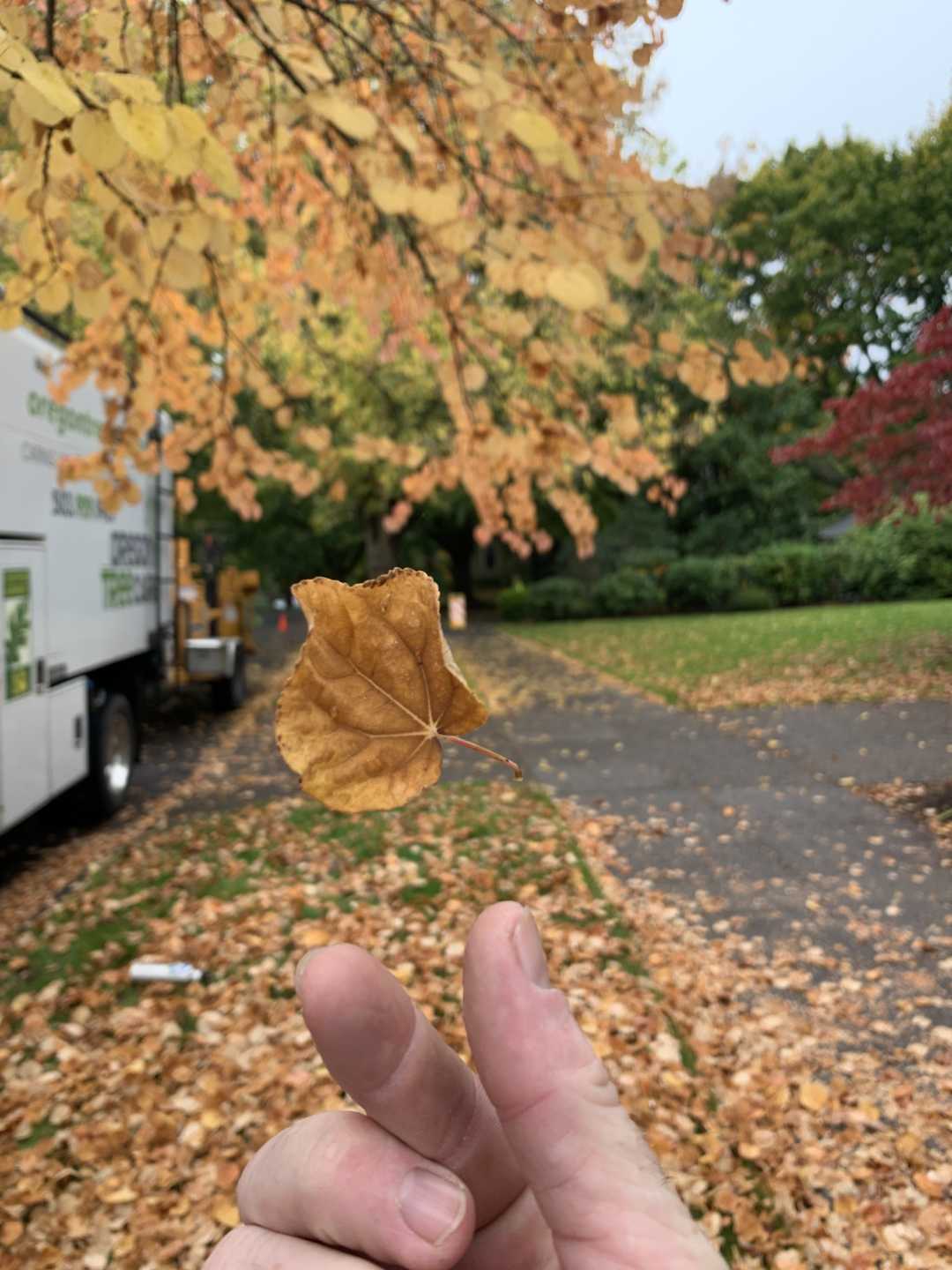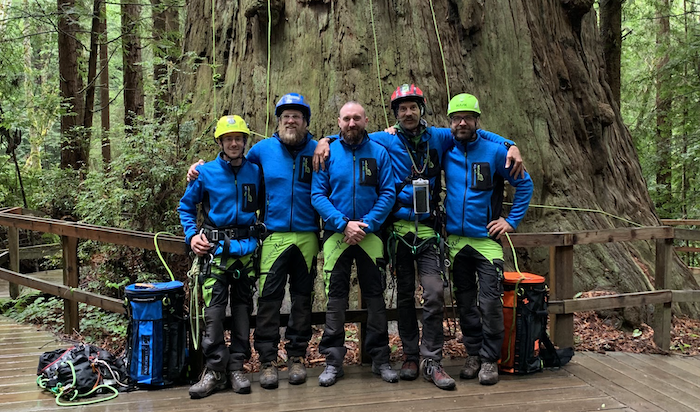
Trees are the lungs of our neighborhoods. They clean the air, give us shade, and provide shelter for birds and wildlife. In a place as green and lush as Oregon, our trees are more than landscape features — they’re part of our identity. But just like any living being, trees can fall ill. And when they do, the effects can spread quickly and silently.
Ever walked by a once-beautiful maple tree and noticed its leaves turning black or its branches drooping for no apparent reason? That could be a tree disease creeping in — and it doesn’t stop at just one tree if left unchecked. In this blog post, our expert arborists will explore what tree diseases are, how to spot them, and most importantly, what you can do to treat or prevent them.
Why tree health matters
Oregon is famous for its forests — Douglas firs, Western red cedars, Bigleaf maples, and more. These trees are critical for soil stability, clean air, flood prevention, and habitat creation.
In urban and suburban areas, trees increase property value, reduce heating and cooling costs, and make communities more walkable and enjoyable. But when diseases take hold, trees can become liabilities instead of assets. Dead or decaying trees can drop limbs or fall entirely, damaging homes, power lines, and people.
Common tree diseases in Oregon
Oregon’s mild, wet climate is ideal for tree growth, but it also creates perfect conditions for disease. Here are some of the most common:
Anthracnose
Causes leaf blight, cankers on twigs, and early leaf drop in maples, oaks, and sycamores. It thrives in spring when it's wet and cool.
Swiss Needle Cast
Affects Douglas firs and causes needles to turn yellow and fall off prematurely, leading to thinning canopies.
Armillaria Root Rot
A deadly fungal disease that attacks the root system and causes white mycelium to grow under the bark. Infected trees may look healthy before suddenly dying.
Leaf Spot Diseases
Common in ornamental trees and shrubs. You’ll notice small brown or black spots forming on leaves, which can lead to early leaf drop if untreated.
Cedar Apple Rust
A fungus that causes bright orange galls on cedar trees and leaf damage on apple or crabapple trees.
Signs your trees might be sick
Trees show signs when something's wrong. Here are red flags to look out for:
• Leaves turning color too early (especially yellowing or browning)
• Wilting or curling leaves
• Bark peeling off or cracked
• Fungus or mushrooms growing at the base
• Soft spots on the trunk
• Dead or dropping branches
• Sap oozing from the trunk
• Holes or sawdust (signs of boring insects)
Keep an eye out during every season. Some diseases are more visible in spring or summer, while others become obvious only after leaves have dropped.
Fungal infections
Fungi are the most common disease agents in trees. They spread via spores in the air, water, or soil. Once they take hold, they’re hard to eliminate.
Powdery mildew, for instance, leaves a white, flour-like film on leaves. It may not kill the tree right away, but it weakens its growth over time. Root rots like Armillaria can live in soil for decades, waiting for the right conditions.
Fungal diseases often thrive in damp conditions — something we see a lot of in Oregon. Pruning and improving airflow can go a long way toward prevention.
Bacterial and viral diseases
These are less common but often more aggressive. For example:
• Fire blight ⏤ seen in pear and apple trees, causes branches to appear scorched. It spreads rapidly in warm, wet weather.
• Crown gall ⏤ a bacterial disease, causes tumor-like growths at the base or on roots, interfering with nutrient flow.
Unfortunately, viral infections can’t be treated directly, so managing the health of the tree and limiting the spread becomes the main focus.
Pests and tree diseases
Insects like aphids, bark beetles, and borers can either directly damage trees or introduce deadly pathogens.
The emerald ash borer, for example, is infamous for devastating ash populations by boring into the tree and disrupting nutrient transport. Early detection is critical, as by the time damage is visible, it’s often too late.
Use insecticidal treatments carefully and only when needed — beneficial insects can help maintain natural balance.
Environmental stress and its impact
Not all tree decline is caused by pathogens. Sometimes, the environment itself is to blame. Examples include:
• Drought stress, leading to leaf drop or sunburn
• Compacted soil from heavy equipment or foot traffic
• Frost damage, especially in early spring
• Pollution or road salt exposure
Stress weakens trees and makes them vulnerable to opportunistic diseases and pests. It's a bit like how we’re more likely to catch a cold when we’re tired or stressed out.
How to prevent tree diseases
Prevention is the best cure. Here’s what you can do:
• Water correctly – Deep and infrequent is better than shallow and daily.
• Use mulch – Helps with moisture retention and prevents weed competition.
• Avoid over-fertilizing – Too much nitrogen can lead to soft, disease-prone growth.
• Keep tools clean – Disinfect pruning shears between trees.
• Plant disease-resistant varieties – Especially important when replacing lost trees.
Proper tree care techniques
Regular maintenance doesn’t have to be complicated. Follow this seasonal guide:
• Spring – Inspect for pests, prune dead wood, mulch.
• Summer – Water during dry spells, monitor leaf health.
• Fall – Clean fallen leaves, check for fungal issues.
• Winter – Prune while dormant, inspect tree structure.
When to call a professional arborist
DIY care can go a long way, but sometimes you need a pro. Call a certified arborist if:
• Large limbs are falling
• The tree is leaning
• You see decay, mushrooms, or cavities
• You’re not sure what’s wrong
At Oregon Tree Care, our certified arborists can provide diagnosis, treatment plans, or safe removal services.
Tree disease treatment options
Treatment varies by issue:
• Fungicides – Best used preventatively
• Pruning – Removes infected branches
• Soil amendment – Improves tree health from the roots up
• Trunk injections – Delivers medicine directly into the vascular system
Remember, timing is everything. Don’t wait until the disease has taken over.
When there's no saving it
It’s a tough decision, but sometimes the safest route is removal — especially if the tree poses a danger to people or property. Dead trees attract pests and can fall without warning.
Professional removal ensures safety and prevents further spread of disease to neighboring trees.
Replanting and starting fresh
After removal, let the soil rest. Treat any lingering disease with fungicide or solarize the soil (a process using heat to sterilize it). Choose trees that are:
• Native to Oregon
• Disease-resistant
• Suited to your soil and light conditions
• Diversity in your planting can help prevent the spread of future diseases.
Future-proofing your landscape
Long-term tree health means planning ahead. Consider:
• Routine check-ups from arborists
• Avoiding monocultures (too many of the same species)
• Learning local threats like sudden oak death or root rot
Trust in expert tree care
Healthy trees are happy trees — happy trees make for beautiful neighborhoods, cleaner air, and a stronger ecosystem. Whether you’re dealing with leaf spots or a serious root rot issue, understanding what your tree is up against is the first step toward protecting it.
With a little knowledge, regular care, and help from local professionals when needed, you can keep your trees thriving for generations to come. From diagnosis to treatment, our experienced arborists are here to support your trees every step of the way. Contact us at Oregon Tree Care or call us at (503) 929-9437 today and give your trees the expert care they deserve.
